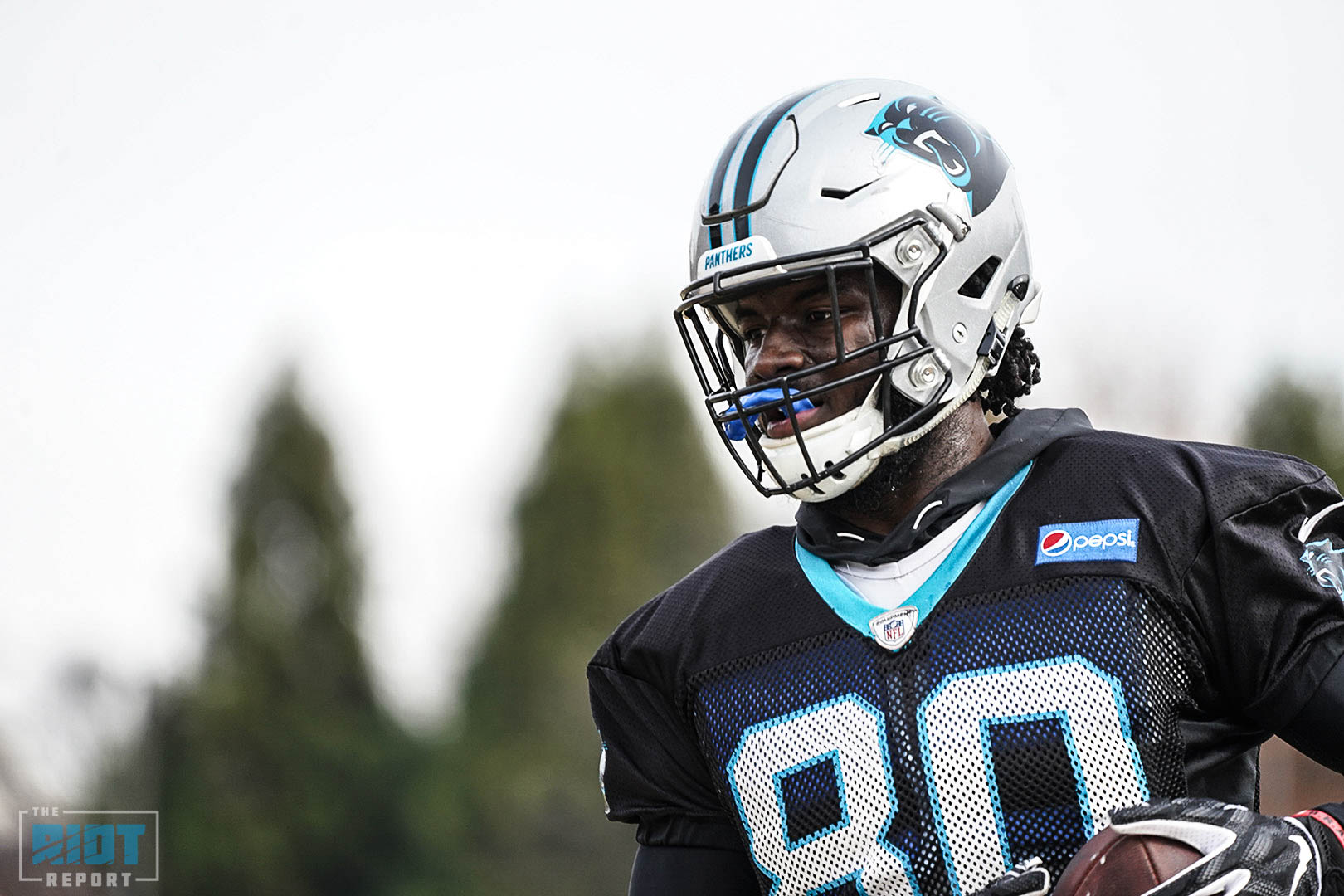So having looked at how the Panthers have used their tight ends, and how Chris Manhertz has been able to carve out something of a role for himself as a specialist blocker, it is now time to look at the biggest source for optimism in the Panthers’ tight end group: 2018 fourth-round pick Ian Thomas.
Before we look at how he was used and how he performed in 2018, it is first worth being clear about how raw Thomas was when he entered the NFL. The Panthers drafted him almost entirely on upside, as he ran very few routes at Indiana and wasn’t asked to do a huge amount as a blocker, instead relying on his athleticism to make plays. It should hardly be surprising then that his role increased as the season went on, but the degree to which his play also improved is worth noting as well.
So How Was He Used?
Thomas was used so infrequently in the Detroit game when Olsen was healthy – he was on the field for two snaps, both of which were runs out of multiple TE sets – that for this exercise, we’re going to focus on the two games we’ve focused on previously (New York & Cleveland) where he was used more heavily.
First, let’s look at the Week 5 Giants game and compare combinations and usage:
| Combination | Run Plays | Pass Plays As A Blocker | Plays As A Receiver |
|---|---|---|---|
| Thomas Only | 9 | 4 | 19 |
| Thomas and Manhertz | 3 | 0 | 5 |
| Thomas, Manhertz and Armah | 6 | 0 | 0 |
The two major takeaways from this are that Thomas was predominantly used as a solo tight end, seeing over half of his snaps in this way, and that out of this formation in particular, he was used predominantly as a receiving option. Now, let’s compare this to how he was used against the Browns in Week 14:
| Combination | Run Plays | Pass Plays As A Blocker | Plays As A Receiver |
|---|---|---|---|
| Thomas Only | 12 | 4 | 37 |
| Thomas and Manhertz | 3 | 0 | 1 |
| Thomas, Manhertz and Armah | 2 | 0 | 2 |
It can be seen fairly easily that the majority of his snaps were as a receiver out of solo TE sets, but it is also worth noting – and this is something that was touched on earlier in this series – that Thomas saw an increasing proportion of his snaps as a solo TE as the season went on.
Against the Giants, just under 70% of his snaps came as a solo TE – which is still quite a lot – but against the Browns, that rose to 87%. Some of this was due to the focus on throwing the ball against a Browns defense that stacked the box against an injured Cam Newton, but some of this is also an indication of their increased trust in Thomas as the season went on.
However, how a player is used is more than just about formations and play time, it’s also about what situations a player was used in. So, when used as a solo TE, how was Thomas used against the Giants:
Situation Run Plays Pass Plays As A Blocker Plays As A Receiver
1st Down 6 2 4
2nd-and-short 1 0 1
2nd-and-long 0 1 7
3rd-and-short 1 0 0
3rd-and-medium 1 1 3
3rd-and-long 0 0 4
4th-and-3 0 0 1
What can be seen from this is that the only situation where he wasn’t predominantly used as a receiver was on first down, and the Panthers did average over six yards per carry on these rushing plays, despite only half of them gaining any yardage at all. Now let’s compare that to his situational usage against the Browns:
Situation Run Plays Pass Plays As A Blocker Plays As A Receiver
1st Down 7 1 9
2nd-and-short 3 0 1
2nd-and-medium 0 0 5
2nd-and-long 0 0 11
3rd-and-short 0 1 2
3rd-and-medium 1 0 1
3rd-and-long 1 1 7
4th-and-short 0 1 1
Again, the majority of his rushing plays came on first down, but to a less extent than against the Giants – 58% compared to 67% – but the biggest difference is when he was asked to pass protect. Against the Giants, half of his pass blocking snaps came on first downs, whereas against the Browns, 75% of these snaps came on either third or fourth down.
Of course, the numbers here are all very small and we can’t make too much of this, but whereas against the Giants, it felt almost as if they put him on the field to catch passes and anything else he did well was a bonus, against the Browns there was more of a genuine mix of usage outside of first downs.
Of course, none of this really matters in the abstract, what really matters how Thomas actually performed in all these situations, so how did he actually get on?
Up Next: Let’s See It



